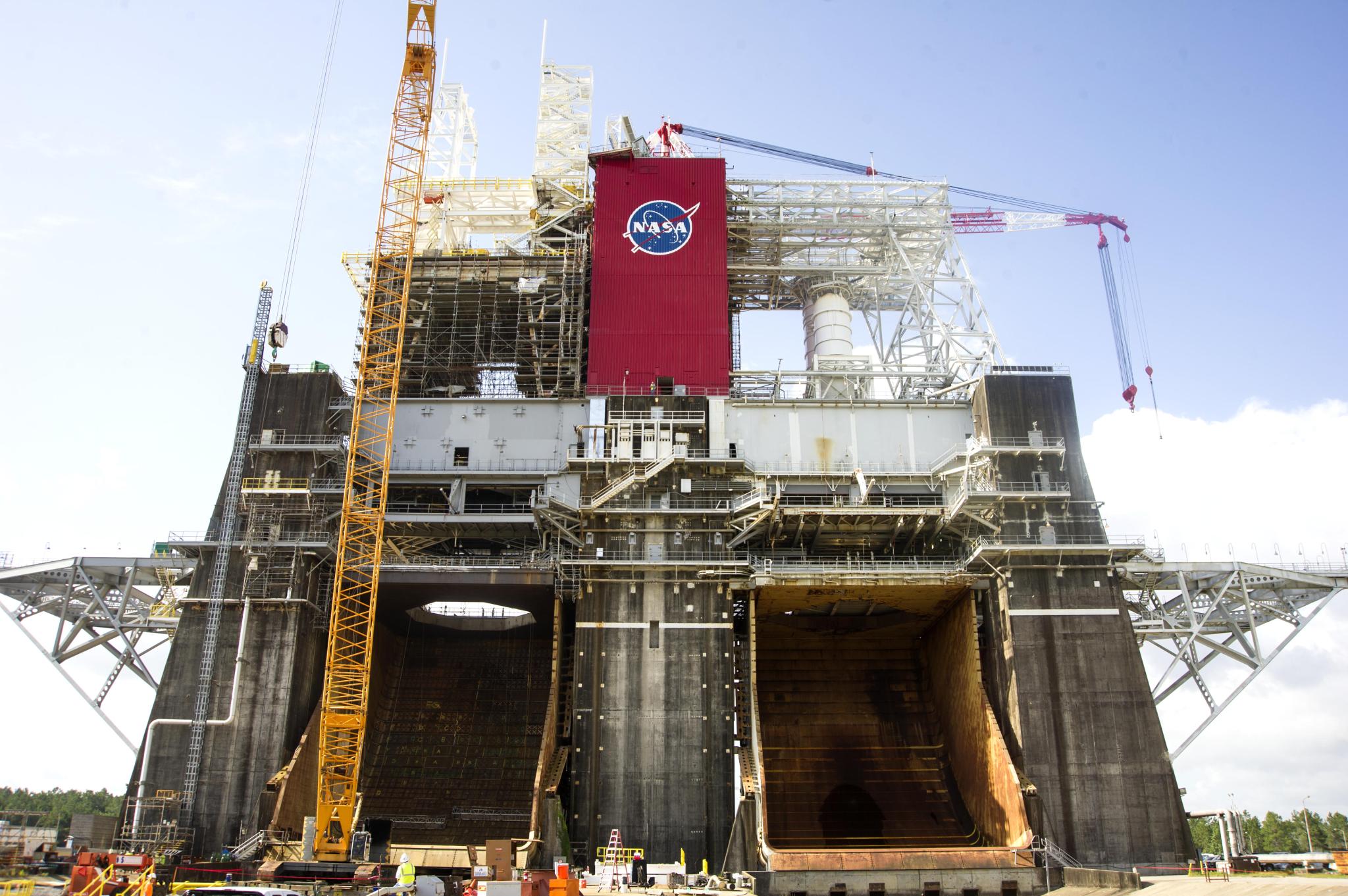NASA moved 100 feet closer to its return to deep-space missions this month with the completion of a steel tower for tests of the world’s most powerful rocket, the Space Launch System (SLS). Engineers completed the addition of about 1 million pounds of structural steel work on the SLS core stage test frame on the B-2 Test Stand at the agency’s Stennis Space Center near Bay St. Louis, Mississippi.
The distance may not sound like much, but completion of the steel work marks a major milestone as NASA prepares to test the core stage of the new SLS rocket, being developed to carry humans deeper into space than ever before, including to an asteroid placed in lunar orbit and ultimately to Mars.
“Every step brings us closer and closer to a new era of space exploration,” Stennis Director Rick Gilbrech said. “These are exciting days, and it is critical for Stennis to fulfill our test role on the frontlines. As has been said time and again, the return to deep space goes right through Stennis and south Mississippi.”
The addition of the structural framework to the historic test stand is needed to support the height and weight of the massive rocket’s core stage while allowing test teams access and providing for thrust takeout, which will hold the core stage in place during testing. The new core stage tanking and hot engine firing framework alters the Stennis skyline and moves NASA closer to the day when an SLS flight core stage is installed on the stand for testing.
For the testing, the actual core stage that will fly on the first SLS mission, including four RS-25 engines, will be installed on the stand. The core stage will be loaded with more than 733,000 gallons of liquid hydrogen and liquid oxygen, then all four engines will be fired simultaneously, creating approximately two million pounds of thrust. The test will run for eight minutes, just as during an actual launch.
NASA has been renovating the B-2 Test Stand for more than two years in preparation for the SLS test series. The historic test stand was built in the 1960s and previously used to test both the Saturn V and the space shuttle propulsion system. Months of studies and evaluations preceded the start of physical work on the stand.
The project is divided into three stages: restoration, buildout, and installation of special test equipment. The first phase involved restoring the stand to meet the SLS test requirements, in which it can be adapted to test any number of stages not exceeding the total thrust of the SLS. The second phase focuses on structural renovations needed to accommodate the SLS core stage. The final phase is installation of all the various interfaces needed to test the stage.
Overall, no area of the stand is going untouched, including structural, mechanical, electrical and piping. One major component was installation of an upgraded high-pressure industrial water system to deliver the added flow volume needed to support the core stage testing. During tests, water is used to cool the exhaust and suppress the decibel level created from the rocket engine combustion.
A major focus also has been the core stage test framework on the stand. The existing configuration was too small to accommodate the larger SLS core stage, which is 27.6 feet in diameter, stands 212 feet tall, and weighs approximately 188,000 pounds when empty and 2.3 million pounds when fueled.
A new configuration required repositioning the original structural framework – all 1.2 million pounds’ worth – 20 feet atop the test stand base platform. Another 1 million pounds of fabricated steel then was added to extend the existing framework from 61 feet high to about 160 feet high.
NASA cheered completion of the structural steel work. “It is another step but a big one that adds to the excitement,” said Barry Robinson, B-2 Reformation, Buildout and Test Project Manager at Stennis. “Any time you start a project from the ground up, it’s hard to visualize. With this step completed, it is not hard to visualize at all.”
Even as the milestone was celebrated, work continued on a variety of fronts. The SLS core stage must be installed and tested at Stennis prior to its first launch on the uncrewed Exploration Mission-1. Robinson said everyone involved in the effort is diligent and focused on the work.
“Everything matters: every nut, every bolt, every weld, every piece of pipe, every concrete pour,” Robinson said. “Everything. We have a good team that understands we have to be diligent. There can be no shortcuts. We can’t afford them. This is our future.”























